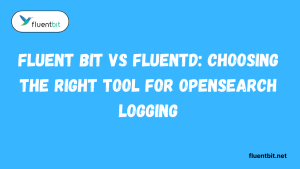Table of Contents
ToggleIntroduction
Setting up a smooth logging pipeline in Kubernetes can feel tricky, but that’s where Fluent Bit and Grafana Loki swoop in like a dream team. Fluent Bit efficiently collects logs from your pods while Grafana Loki organizes and stores them in a way that’s easy to query and visualize.
Together, they make monitoring a breeze, saving time and headaches. Using Kubernetes as your environment adds another layer of magic.
Why Fluent Bit and Grafana Loki are a Perfect Match
Fluent Bit and Grafana Loki pair together like peanut butter and jelly in the world of logging! Fluent Bit serves as a lightweight, highly efficient log forwarder that can collect and filter logs from multiple sources, while Grafana Loki excels in storing and querying logs with minimal overhead.
Benefits of Using Kubernetes for Log Aggregation
Kubernetes alleviates the headache of log collection by providing a standardized environment for your applications. Deploying Fluent Bit within Kubernetes means that every pod can automatically send logs to Loki, maintaining consistent observability across the cluster.
What is Fluent Bit and Grafana Loki?
When it comes to logging, Fluent Bit is your agile little helper. It’s a fast, lightweight log forwarder that collects, parses, and ships logs from multiple sources with minimal resource usage. Whether your logs come from apps, system processes, or containers, Fluent Bit ensures they reach their destination efficiently.
Many users debating Fluent Bit vs Promtail often highlight Fluent Bit’s versatility and plugin ecosystem as a significant advantage.
Overview of Fluent Bit as a Log Forwarder
Fluent Bit is like a tiny but mighty mail carrier for your logs. It grabs logs from Kubernetes pods, system files, or cloud services, formats them, and sends them to the destination of your choice. The promtail vs Fluent Bit conversation often highlights that Fluent Bit supports more output destinations and flexible configuration options, making it ideal for complex environments.
Understanding Grafana Loki as a Log Storage System
Grafana Loki works like a highly organized filing cabinet for all your logs. It stores logs efficiently, indexing metadata while keeping raw log entries mostly untouched. This ensures fast searches without inflating storage costs, making it perfect for modern containerized environments. Users comparing FluentBit vs.
How They Work Together in Kubernetes
In Kubernetes, Fluent Bit and Grafana Loki become a dream team. Fluent Bit runs as a DaemonSet on every node, collecting logs from pods in real-time. It forwards these logs to Loki, which indexes metadata and stores them efficiently. This ensures that logs from every corner of your cluster are centralized and searchable.
Preparing Your Kubernetes Cluster for Logging
Before diving into Fluent Bit, it’s essential to prepare your Kubernetes cluster. This means making sure you have the right tools installed, namespaces created, and permissions set. Proper preparation ensures a smooth logging setup without surprises. A clean cluster setup lets Fluent Bit collect logs efficiently from all pods and nodes.
Installing Required Tools and Namespaces
- Identify all tools needed for your Fluent Bit setup, such as Lua and plugins.
- Download and install the latest stable versions to ensure compatibility.
- Set up namespaces for organizing logs and avoiding conflicts.
- Verify installations by running test commands or sample configurations.
- Keep tools updated regularly to maintain performance and security.
Configuring Service Accounts and Permissions
Fluent Bit needs proper permissions to access logs from all pods and nodes. Set up service accounts with the right roles and cluster role bindings. This ensures that Fluent Bit can read logs securely without giving excessive access.
Assigning permissions carefully also prevents common issues, such as denied access or missing logs. With correct roles in place, your logging flow remains smooth, and security best practices are maintained.
Installing Fluent Bit on Kubernetes
Installing Fluent Bit is a breeze with Helm charts. Helm handles resource creation, deployment configurations and updates making the process straightforward even for beginners. Select the values files to customize configurations such as log paths, parsers, and output destinations.
A well-configured installation avoids post-deployment tweaks and keeps logs flowing seamlessly to Grafana Loki.
Using Helm Charts for Deployment
- Helm charts simplify the deployment of Fluent Bit on Kubernetes clusters.
- Package all configurations, plugins, and dependencies into reusable templates.
- Enable easy upgrades and rollbacks with minimal downtime.
- Support customizing values for different environments or workloads.
Configuring DaemonSets for Log Collection
DaemonSets are key to collecting logs from every node in your Kubernetes cluster. By deploying Fluent Bit as a DaemonSet, you ensure that no log is missed, even when new nodes are added dynamically. Configure each DaemonSet carefully to point to the correct log paths and apply necessary filters.
This setup maximizes efficiency, making your logs structured and easy to query in Grafana Loki dashboards.
Configuring Fluent Bit for Grafana Loki
Once Fluent Bit is installed, it’s time to connect it with Grafana Loki. Proper configuration ensures logs flow smoothly and are easy to query. This step bridges your cluster’s log collection with a powerful visualization and monitoring tool. It’s also the perfect stage to apply performance tweaks.
Setting Up the Loki Output Plugin
The Loki output plugin is what sends your logs from Fluent Bit to Grafana Loki. Configure it with your Loki endpoint labels and tenant information. Accurate labels make log filtering in Grafana simple and effective. This plugin also supports batch sending which helps manage load.
Adjusting Fluent Bit Buffer Size and Fluent Bit Chunk Size for Optimal Performance
Performance tuning is essential for smooth log processing. Adjust the Fluent Bit buffer size to control the amount of memory Fluent Bit uses before sending data. Similarly, tweaking the Fluent Bit chunk size balances batch processing and network efficiency. Setting the proper parameters prevents data loss during spikes.
Creating Configuration Maps for Kubernetes
Configuration maps (ConfigMaps) store Fluent Bit settings in Kubernetes, making it easy to update without requiring a redeployment of pods. Store parsers, filters, and output configurations here for centralized management. Using ConfigMaps also makes scaling simpler.
Testing and Verifying Log Flow
After setup, it’s crucial to test your logging flow. Start by sending a few test logs from a pod. Ensure they are captured by Fluent Bit and forwarded correctly to Grafana Loki. Testing early helps catch misconfigurations or permission issues. I
Sending Test Logs from a Pod
You can use simple echo commands or logging applications inside a pod to generate test logs. Monitor Fluent Bit’s logs to confirm it picks up and forwards these entries correctly. This step is not only for verification but also provides insight into how Fluent Bit vs. Promtail handles real-time log flow, highlighting the efficiency and reliability of your setup.
Checking Logs in Grafana Loki Dashboards
Finally, open Grafana and navigate to Loki dashboards to confirm logs are arriving as
expected. Use filters and queries to validate labels and timestamps. Seeing your logs in Grafana ensures your setup works end-to-end. It also provides an opportunity to fine-tune filters labels and performance settings for an optimal logging experience in production.
Troubleshooting Common Issues
Even the smoothest setup can sometimes hit a snag. Start by checking connectivity between Fluent Bit and Grafana Loki. Network policies, firewall rules, or incorrect endpoints can block log flow, so verifying the connection first is always a good idea. Next, check permissions and configurations.
Ensure that service accounts, ConfigMaps, and DaemonSets are configured correctly.
Resolving Connectivity Problems
Connectivity issues are common in Kubernetes logging setups. Verify your Loki endpoint, ports, and TLS settings if using HTTPS. Fluent Bit logs often reveal network-level problems that require prompt attention. Sometimes, firewall rules or internal Kubernetes networking can block communication.
Using kubectl port-forward for testing or reviewing network policies helps identify the problem.
Fixing Permission or Configuration Errors
- Check file and directory permissions to ensure Fluent Bit can access logs.
- Verify configuration files for syntax errors or missing parameters.
- Review plugin settings to confirm compatibility with your environment.
- Use logs and error messages to pinpoint the source of issues.
- Adjust system or user permissions as needed to resolve access problems.
Handling High Log Throughput Scenarios
High-traffic clusters can overwhelm Fluent Bit if the buffer size and chunk size are not correctly tuned for Bit. Adjusting these parameters helps maintain smooth log flow and prevents data loss. Batching logs efficiently, optimizing buffer settings, and ensuring network capacity can make your setup handle bursts with ease.
Conclusion
Setting up Fluent Bit for Grafana Loki in Kubernetes doesn’t have to be intimidating. With careful configuration of DaemonSets, service accounts, and output plugins, you can achieve smooth, reliable log collection. Tuning the Fluent Bit buffer size and Fluent Bit chunk size ensures your cluster handles high traffic without losing logs.
FAQs
What is the difference between Fluent Bit and Fluentd?
Fluent Bit is a lightweight, high-performance solution, ideal for edge and container environments. Fluentd is more feature-rich but heavier.
How do I configure Fluent Bit for multiple Loki instances?
You can define multiple output plugins in your ConfigMap, each pointing to a different Loki instance. Labels and routing rules help segregate logs effectively.
Can I filter logs before sending them to Loki?
Yes! Fluent Bit supports filters such as grep, Lua, and record modifications to process logs before forwarding. This keeps Loki clean and focused.
How does fluent bit buffer size affect performance?
A larger Fluent Bit buffer size allows for batching more logs in memory, reducing network calls but increasing memory usage. A too-small buffer may cause frequent flushes and slow performance.
How does fluent bit chunk size impact memory usage?
The Fluent Bit chunk size defines how many logs are sent in a single batch. Larger chunks improve throughput but can spike memory usage. Finding a balance is key.
Is it safe to use Fluent Bit in production on Kubernetes?
Absolutely! With proper tuning of buffers, chunk sizes and resource limits, Fluent Bit is stable and reliable for production-scale logging.
Latest post:
- Best Practices for Fluent Bit Output Matching in Complex Pipelines
- Setting Up Fluent Bit with Open Telemetry for Unified Observability
- Fluent Bit vs Fluentd: Choosing the Right Tool for OpenSearch Logging
- How to Use fluent-plugin-opensearch for Fluentd Pipelines
- Is Ansys Fluent Better for Complex Fluid Flow Simulations?












